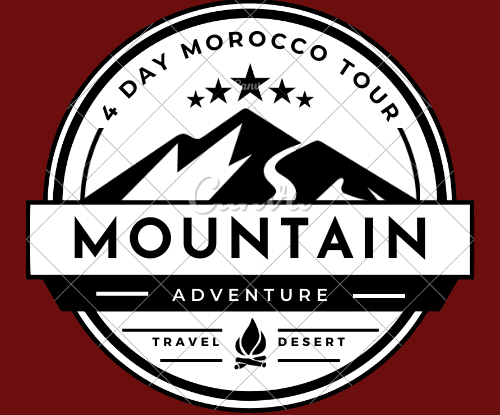Morocco trips, a captivating blend of rich history, diverse landscapes, and vibrant culture, is one of the most exciting destinations for travelers seeking a unique experience. From the windswept dunes of the Sahara to the bustling souks of Marrakech, the ancient streets of Fes, and the sparkling coastline of Essaouira, Morocco offers a diverse range of experiences.
Top Destinations in Morocco
1. Marrakech: The Red City
Marrakech is a vibrant city that seamlessly combines tradition and modernity. Famous for its bustling Jemaa el-Fnaa square, winding alleys, and lush gardens, Marrakech is a feast for the senses. Don’t miss:
- Koutoubia Mosque: An iconic symbol of Marrakech.
- Majorelle Garden: A tranquil oasis once owned by Yves Saint Laurent.
- Saadian Tombs: Historic tombs of the Saadian dynasty.
- Medina: A UNESCO World Heritage site, home to souks and hidden courtyards.
2. Fes: The Cultural Heartbeat
Fes is often referred to as the cultural and spiritual capital of Morocco. Its medieval old town (Fes el-Bali) is one of the largest car-free urban areas in the world.
- Fes el-Bali Medina: A labyrinth of narrow streets, ancient palaces, and mosques.
- Al Quaraouiyine University: The world’s oldest existing degree-granting university.
- Chouara Tannery: One of the oldest tanneries in the world, offering a colorful view of Morocco’s leather industry.
3. Chefchaouen: The Blue City
Nestled in the Rif Mountains, Chefchaouen is famous for its blue-painted buildings and relaxed atmosphere. It’s perfect for photography and exploring the narrow, winding streets.
4. The Sahara Desert: A Timeless Escape
The Sahara Desert offers a once-in-a-lifetime experience. Visitors can take camel treks, camp under the stars, and watch the golden dunes shift with the wind. Popular desert gateways include:
- Merzouga: Known for its stunning Erg Chebbi dunes.
- Zagora: A quieter desert experience, ideal for those looking to escape the crowds.
5. Essaouira: Coastal Charm
Essaouira, a coastal city known for its historic medina, fresh seafood, and relaxed vibe, is a UNESCO World Heritage site. The city has a rich history, influenced by various cultures including Berber, Portuguese, and French.
6. Atlas Mountains
The Atlas Mountains provide a stunning backdrop to Morocco’s landscapes and offer excellent trekking opportunities. Visitors can explore traditional Berber villages and enjoy views of the valleys and rugged peaks.
Cultural Highlights
Moroccan Cuisine
Moroccan food is a delightful blend of spices, fresh ingredients, and bold flavors. Must-try dishes include:
- Tagine: A slow-cooked stew, often made with lamb, chicken, vegetables, and dried fruits.
- Couscous: A traditional dish served with vegetables and meat.
- Pastilla: A savory pie made from pastry, pigeon meat (or chicken), and almonds, spiced with cinnamon and saffron.
- Mint Tea: A staple drink, often referred to as “Moroccan whisky.”
Traditional Markets (Souks)
Morocco’s souks are famous for their vibrant colors, tantalizing smells, and intricate handicrafts. From handwoven rugs to leather goods, silver jewelry, and spices, you’ll find something special at every turn. Bargaining is part of the fun, so don’t hesitate to negotiate for the best price.
Music and Dance
Moroccan music is an integral part of the country’s cultural fabric. Enjoy performances of traditional gnawa music, berber folk music, and chaabi (popular music). The annual Mawazine Festival in Rabat showcases world-renowned artists and performers.
Adventure and Activities
- Camel Treks: Explore the Sahara Desert on a camel’s back for a truly unique experience.
- Hiking in the Atlas Mountains: Trek through breathtaking landscapes and explore remote Berber villages.
- Surfing in Taghazout: Morocco has some of the best surf spots along its Atlantic coast.
- Hot Air Balloon Rides: Experience the vast landscapes of Morocco from above, especially around Marrakech and the Atlas Mountains.
- Horseback Riding: Experience Morocco’s countryside on horseback, particularly around Marrakech or Essaouira.
Best Time to Visit
The best times to visit Morocco are during the spring (March to May) and fall (September to November) when the weather is mild and comfortable. Summer can be very hot, especially in the desert and inland cities like Marrakech, Fes, and Merzouga. Winter (December to February) offers cooler weather but can get chilly in the mountains.
Practical Travel Tips
- Language: Arabic and Berber are the official languages. French is widely spoken, and English is common in tourist areas.
- Currency: The Moroccan Dirham (MAD). It’s best to exchange money in advance or use ATMs in major cities.
- Dress Code: While Morocco is a relatively liberal country, it’s best to dress modestly, especially when visiting religious sites or rural areas.
- Transportation: Morocco has a well-connected network of buses, taxis, and trains. Renting a car is also a good option if you wish to explore more remote areas.
- Visa: Many nationalities can enter Morocco without a visa for stays up to 90 days. However, it’s essential to check current visa requirements based on your nationality.
Moroccan Hospitality
Moroccans are known for their warm and welcoming hospitality. If invited into a local’s home, it’s customary to bring a small gift as a token of appreciation. You’ll likely be offered mint tea, which is a symbol of friendship.
Morocco tours
Desert tours from Marrakech
- 8 days Morocco desert tour Marrakech
Tours from Fes desert Morocco
- Shared 3 days Fes desert tour to Merzouga
- 8 day Morocco tour Fes to Marrakech desert
Tours from Casablanca Morocco
- 4 days tour from Casablanca to Marrakech
- 15 day Morocco tour from Casablanca desert
Tours from Tangier Morocco
- 9 days Tangier trip to Marrakech and Sahara desert
- 12 day Morocco tour from Tangier desert
Our Contacts
Payment methods
4 Day Morocco Tour
Follow us
Tours Into Morocco
- Tours from Marrakech to desert
- Trips from Fes to Sahara desert
- Tours from Casablanca, Morocco
- Tours from Tangier Morocco tour
- Tours from Agadir desert Morocco
- Merzouga Camel trekking, Morocco
- Atv quad bike Merzouga Morocco
- Hot air balloon Marrakech into Morocco
